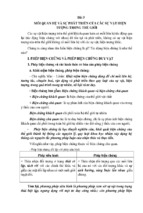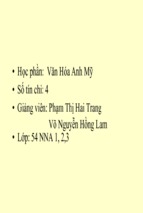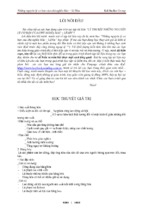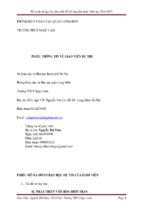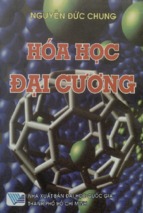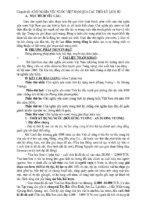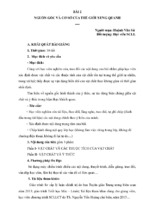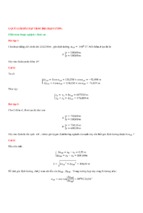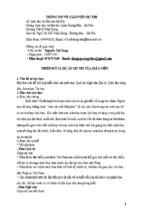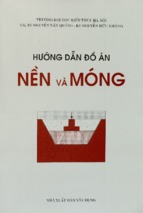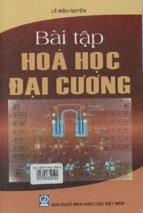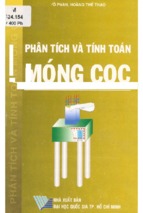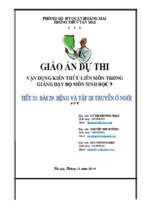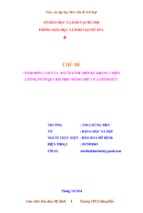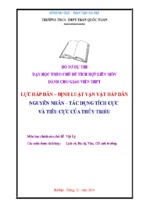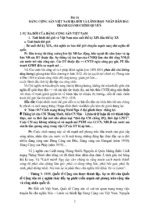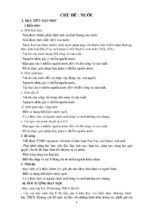Downloaded from ascelibrary.org by RMIT UNIVERSITY LIBRARY on 01/03/19. Copyright ASCE. For personal use only; all rights reserved.
GSP 302
PanAm
Unsaturated Soils
2017
Applications
Papers from Sessions of the
Second Pan-American Conference
on Unsaturated Soils
Dallas, Texas
November 12–15, 2017
Edited by
Laureano R. Hoyos, Ph.D., P.E.
John S. McCartney, Ph.D., P.E.
Sandra L. Houston, Ph.D., D.GE
William J. Likos, Ph.D.
Downloaded from ascelibrary.org by RMIT UNIVERSITY LIBRARY on 01/03/19. Copyright ASCE. For personal use only; all rights reserved.
GEOTECHNICAL
SPECIAL
PUBLICATION
NO.
302
PANAM UNSATURATED
SOILS 2017
APPLICATIONS
SELECTED PAPERS FROM SESSIONS OF THE SECOND
PAN-AMERICAN CONFERENCE ON UNSATURATED SOILS
November 12–15, 2017
Dallas, Texas
SPONSORED BY
International Society of Soil Mechanics and Geotechnical Engineering
The Geo-Institute of the
American Society of Civil Engineers
EDITED BY
Laureano R. Hoyos, Ph.D., P.E.
John S. McCartney, Ph.D., P.E.
Sandra L. Houston, Ph.D., D.GE
William J. Likos, Ph.D.
Published by the American Society of Civil Engineers
Downloaded from ascelibrary.org by RMIT UNIVERSITY LIBRARY on 01/03/19. Copyright ASCE. For personal use only; all rights reserved.
Published by American Society of Civil Engineers
1801 Alexander Bell Drive
Reston, Virginia, 20191-4382
www.asce.org/publications | ascelibrary.org
Any statements expressed in these materials are those of the individual authors and do not
necessarily represent the views of ASCE, which takes no responsibility for any statement
made herein. No reference made in this publication to any specific method, product, process,
or service constitutes or implies an endorsement, recommendation, or warranty thereof by
ASCE. The materials are for general information only and do not represent a standard of
ASCE, nor are they intended as a reference in purchase specifications, contracts, regulations,
statutes, or any other legal document. ASCE makes no representation or warranty of any
kind, whether express or implied, concerning the accuracy, completeness, suitability, or
utility of any information, apparatus, product, or process discussed in this publication, and
assumes no liability therefor. The information contained in these materials should not be used
without first securing competent advice with respect to its suitability for any general or
specific application. Anyone utilizing such information assumes all liability arising from such
use, including but not limited to infringement of any patent or patents.
ASCE and American Society of Civil Engineers—Registered in U.S. Patent and Trademark
Office.
Photocopies and permissions. Permission to photocopy or reproduce material from ASCE
publications can be requested by sending an e-mail to
[email protected] or by locating a
title in ASCE's Civil Engineering Database (http://cedb.asce.org) or ASCE Library
(http://ascelibrary.org) and using the “Permissions” link.
Errata: Errata, if any, can be found at https://doi.org/10.1061/9780784481691
Copyright © 2018 by the American Society of Civil Engineers.
All Rights Reserved.
ISBN 978-0-7844-8169-1 (PDF)
Manufactured in the United States of America.
PanAm Unsaturated Soils 2017 GSP 302
iii
Preface
Downloaded from ascelibrary.org by RMIT UNIVERSITY LIBRARY on 01/03/19. Copyright ASCE. For personal use only; all rights reserved.
The Second Pan-American Conference on Unsaturated Soils (PanAm-UNSAT 2017)
was held in Dallas, Texas, November 12-15, 2017, featuring the latest research
advances and engineering‐practice innovations in the area of Unsaturated
Geotechnics, with a focus on characterization, modeling, design, construction, field
performance and sustainability.
PanAm-UNSAT 2017 follows a now well-established series of regional and
international conferences on Unsaturated Soils, bringing together researchers,
practitioners, students and policy makers from around the world, particularly the
Americas. The conference built upon the success of PanAm-UNSAT 2013 (First PanAmerican Conference on Unsaturated Soils, Cartagena, Colombia), as well as that of
previous conferences on unsaturated soils hosted in the United States, including
UNSAT 2006 (Fourth International Conference on Unsaturated Soils, Carefree,
Arizona) and EXPANSIVE’92 (Seventh International Conference on Expansive
Soils, Dallas, Texas, 1992).
Proceedings of PanAm-UNSAT 2017 have been documented in four Geotechnical
Special Publications (GSP) of ASCE including Volume 1: Plenary Session Papers;
Volume 2: Fundamentals; Volume 3: Applications; and Volume 4: Swell-Shrink and
Tropical Soils.
Current Volume 3 (Applications) consists of five sections:
Section I, General Field Applications, includes 11 papers dealing with case histories
of geotechnical structures constructed in the field and field measurements of different
variables relevant to unsaturated soil mechanics. Field situations investigated include
embankments, slopes, and pan lysimeters. Field testing approaches include
interpretation of cone penetration testing in unsaturated soils, and monitoring of
variables such as the suction, degree of saturation, effective stress, temperature, earth
pressure, and creep displacements.
Section II, Stability of Unsaturated Slopes, includes 10 papers dealing with the
performance analysis and design of slopes and excavations involving unsaturated
soils. Seasonal effects on slope stability and triggering mechanisms are described, as
well as consideration of probabilistic analyses, reliability, and risk evaluation.
Section III, Pipelines and Transportation Infrastructure, includes 5 papers dealing
with analyses of pipelines and roadways involving unsaturated soils. One paper on
pipelines focused on uplift effects and movement of pipelines in unsaturated soils,
focusing on the deformation response of this challenging topic. The four papers on
transportation involve evaluation techniques for pavements on unsaturated soils, as
well as analyses techniques for evaluating the deformation of roadways on expansive
soils.
© ASCE
PanAm Unsaturated Soils 2017 GSP 302
Downloaded from ascelibrary.org by RMIT UNIVERSITY LIBRARY on 01/03/19. Copyright ASCE. For personal use only; all rights reserved.
Section IV, Climate Effects and Permafrost, includes 6 papers dealing with soilatmosphere interaction in terms of both infiltration and evaporation as well as
freezing and thawing. Papers focus on the impact of climate variations on natural
unsaturated soils, the role of climate in drying mine tailings, and use of simplified
climate interaction approaches such as the Thornwaite moisture index.
Section V, Bioremediation and Energy Geotechnics, includes 9 papers dealing with
energy piles in unsaturated soils, energy storage, and bio-modification for both
mechanical and hydraulic benefits. Papers also include energy storage systems
involving storage of thermal energy in borehole arrays in the vadose zone and storage
of energy in the form of compressed air in the subsurface. This section also includes a
paper on an evaluation of unsaturated soils in providing barriers for nuclear waste
repositories. The bio-modification studies focus on hydraulic properties of biocharamended soils for landfill covers, bioremediation of unsaturated soils contaminated
with seawater after tsunamis, and the impact of gas generation due to biological
activity on the pore pressures in unsaturated soils.
Each paper was subject to rigorous technical review during a three-phase submission
process and received a minimum of two positive peer reviews before final acceptance
by the corresponding session chair(s).
© ASCE
iv
PanAm Unsaturated Soils 2017 GSP 302
Acknowledgments
Downloaded from ascelibrary.org by RMIT UNIVERSITY LIBRARY on 01/03/19. Copyright ASCE. For personal use only; all rights reserved.
The following individuals deserve special acknowledgment and recognition for their
direct involvement and efforts in making this regional conference a success:
PanAm-UNSAT 2017 Program Committee
Conference Chair: Laureano R. Hoyos, Ph.D., P.E., University of Texas at Arlington
Conference Co-Chair: John S. McCartney, Ph.D., P.E., M.ASCE, University of
California, San Diego
Technical Program Chair: Sandra L. Houston, Ph.D., D.GE, M.ASCE, Arizona
State University
Technical Program Co-Chair: William J. Likos, Ph.D., M.ASCE, University of
Wisconsin, Madison
Local Chair: Marcelo J. Sanchez, Ph.D., Aff.M.ASCE, Texas A&M University
Local Co-Chair: Gerald A. Miller, Ph.D., P.E., M.ASCE, University of Oklahoma
Logistics Coordinator: Majid Ghayoomi, Ph.D., A.M.ASCE, University of New
Hampshire
Sponsorships/Exhibits Chair & Liaison from the G-I Technical Coordination
Council (TCC): Anand J. Puppala, Ph.D., P.E., D.GE, F.ASCE, University of Texas
at Arlington
The Geo-Institute (G-I) of the ASCE
Brad Keelor, Director
Helen Cook, Board and Meetings Specialist
Lucy King, Senior Manager, Conferences
Cristina Charron, Manager, Conferences
Drew Caracciolo, Manager, Sponsorships and Exhibits
Rachel Hobbs, Administrator, Conferences
The conference Program Committee would also like to acknowledge the officers of
the TC106 Committee on Unsaturated Soils (ISSMGE), and all members of the
Technical Advisory and International Technical Committees, who provided guidance
and support during the early planning phases of the conference.
TC106 Committee on Unsaturated Soils (ISSMGE)
David Toll, Chair, University of Durham, UK
Bernardo Caicedo, Vice Chair, Universidad de Los Andes, Bogotá, Colombia
Adrian Russell, Secretary, University of New South Wales, Australia
Technical Advisory Committee
Sai Vanapalli, University of Ottawa, Canada
Greg Siemens, Royal Military College, Canada
Kanthasamy (Muralee) Muraleetharan, University of Oklahoma, USA
© ASCE
v
PanAm Unsaturated Soils 2017 GSP 302
Downloaded from ascelibrary.org by RMIT UNIVERSITY LIBRARY on 01/03/19. Copyright ASCE. For personal use only; all rights reserved.
Xiong Zhang, University of Cincinnati, USA
Ning Lu, Colorado School of Mines, USA
Claudia Zapata, Arizona State University, USA
Jorge Zornberg, University of Texas at Austin, USA
Jorge Abraham Diaz-Rodriguez, UNAM, Mexico
Bernardo Caicedo, Universidad de Los Andes, Bogotá, Colombia
Julio E. Colmenares, Universidad Nacional, Bogotá, Colombia
Orencio Villar, University of São Paulo, São Carlos, Brazil
Tacio de Campos, PUC-Rio, Brazil
Fernando Marinho, University of São Paulo, Brazil
Manoel Porfírio Cordão Neto, Universidade de Brasília, Brazil
Diego Manzanal, University of Buenos Aires, Argentina
Alejo Sfriso, University of Buenos Aires, Argentina
International Technical Committee
David Toll, University of Durham, UK
Adrian Russell, University of New South Wales, Australia
Eduardo Alonso, UPC, Barcelona, Spain
Antonio Gens, UPC, Barcelona, Spain
Lyesse Laloui, EFP Lausanne, Switzerland
J. Carlos Santamarina, KAUST, Saudi Arabia
Charles Ng, HKUST, Hong Kong
PanAm-UNSAT 2017 Session Chairs
The conference Program Committee would also like to acknowledge the conference
Session Chairs, who guided authors and reviewers through the draft and final phases
of paper submission and review. In most cases, these chairs also served as on-site
moderators during the conference itself.
01/ Dynamic Behavior of Unsaturated Soils, part I
Majid Ghayoomi, Ph.D., A.M.ASCE, University of New Hampshire
02/ Dynamic Behavior of Unsaturated Soils, part II
Nadarajah Ravichandran, Ph.D., M.ASCE, Clemson University
Laureano R. Hoyos, Ph.D., P.E., M.G-I, University of Texas at Arlington
03/ Expansive Soils and Volume Change, Part I
Rifat Bulut, Ph.D., M.ASCE, Oklahoma State University
04/ Expansive Soils and Volume Change, Part II
Jairo E. Yepes, Ph.D., Universidad Santo Tomás, Bogotá, Colombia
Ujwalkumar D. Patil, Ph.D., P.E., M.ASCE, University of Guam
Liangbo Hu, Ph.D., A.M.ASCE, University of Toledo
© ASCE
vi
PanAm Unsaturated Soils 2017 GSP 302
05/ Expansive Soils and Volume Change, Part III
Iraj Noorany, Ph.D., P.E., G.E., F.ASCE, Noorany Geotechnical
Downloaded from ascelibrary.org by RMIT UNIVERSITY LIBRARY on 01/03/19. Copyright ASCE. For personal use only; all rights reserved.
06/ Pore Fluid Retention Behavior, Part I
William J. Likos, Ph.D., M.ASCE, University of Wisconsin, Madison
Idil Deniz Akin, Ph.D., A.M.ASCE, Washington State University
07/ Pore Fluid Retention Behavior, Part II
Corrie Walton-Macaulay, Ph.D., P.E., M.ASCE, Bucknell University
08/ Hydraulic Behavior, Part I
Leonardo D. Rivera, METER Group
09/ Hydraulic Behavior, Part II
Leonardo D. Rivera, METER Group
10/ Shear Strength Behavior
Ali Khosravi, Ph.D., Aff.M.ASCE, Sharif University of Technology
11/ Innovations in Testing, Part I
Morteza Khorshidi, Ph.D., Aff.M.ASCE, Geosyntec Consultants
Xin Kang, Ph.D., ACI, ASTM, A.M.ASCE, Hunan University
12/ Innovations in Testing, Part II
Morteza Khorshidi, Ph.D., Aff.M.ASCE, Geosyntec Consultants
Xin Kang, Ph.D., ACI, ASTM, A.M.ASCE, Hunan University
13/ Innovations in Testing, Part III
Morteza Khorshidi, Ph.D., Aff.M.ASCE, Geosyntec Consultants
Xin Kang, Ph.D., ACI, ASTM, A.M.ASCE, Hunan University
14/ Field Applications of Unsaturated Soils
Gerald A. Miller, Ph.D., P.E., M.ASCE, University of Oklahoma
15/ Stability of Unsaturated Slopes, Part I
Navid H. Jafari, Ph.D., A.M.ASCE, Louisiana State University
16/ Stability of Unsaturated Slopes, Part II
Soonkie Nam, Ph.D., EIT, A.M.ASCE, Georgia Southern University
17/ Numerical Modeling: Flow and Deformation, Part I
Zhen Liu, Ph.D., P.E., M.ASCE, Michigan Technological University
© ASCE
vii
PanAm Unsaturated Soils 2017 GSP 302
viii
18/ Numerical Modeling: Flow and Deformation, Part II
Xiaoyu Song, Ph.D., A.M.ASCE, University of Florida
Downloaded from ascelibrary.org by RMIT UNIVERSITY LIBRARY on 01/03/19. Copyright ASCE. For personal use only; all rights reserved.
19/ Numerical Modeling: Coupled Processes
Giuseppe Buscarnera, Ph.D., Aff.M.ASCE, Northwestern University
20/ Foundations on Expansive Soils
Xiong Zhang, Ph.D., P.E. A.M.ASCE, Missouri University of Science and
Technology
21/ Expansive Soils: Mitigation
Bhaskar C.S. Chittoori, Ph.D., P.E., M.ASCE, Boise State University
22/ Expansive Soils: Modeling
Xinbao Yu, Ph.D., P.E., M.ASCE, University of Texas-Arlington
23/ Pipeline and Transportation Structures in Unsaturated Soils
Claudia E. Zapata, Ph.D., A.M.ASCE, Arizona State University
Mohammad Sadik Khan, Ph.D., P.E., M.ASCE, Jackson State University
24/ Modeling of Cracked Soils and Effects of Cracking
Marcelo J. Sanchez, Ph.D., Aff.M.ASCE, Texas A&M University
25/ Constitutive Modeling: Micro to Macro
Kalehiwot N. Manahiloh, Ph.D., P.E., M.ASCE, University of Delaware
26/ Climate Effects and Permafrost
Farshid Vahedifard, Ph.D., P.E., M.ASCE, Mississippi State University
27/ Energy Geotechnics, Bio-Geo, and Sustainability
John S. McCartney, Ph.D., P.E., M.ASCE, University of California, San Diego
PanAm-UNSAT 2017 Draft Paper Reviewers
Finally, the Program Committee would also like to acknowledge those who
contributed to the conference by serving as the primary reviewers of draft papers.
Their efforts in providing careful, thorough reviews of each submission form the
backbone of quality assurance, providing organizers the confidence that conference
content would represent the best of current thinking in the field, and allowing these
Proceedings to be published as a multi-volume Geotechnical Special Publication
(GSP).
Murad Abu Farsakh
Raju Acharya
Marshall Addison
© ASCE
Asif Ahmed
Beena Ajmera
Amir Akbari Garakani
Idil Akin
Miguel Alfaro
Saumya Amarasiri
PanAm Unsaturated Soils 2017 GSP 302
Downloaded from ascelibrary.org by RMIT UNIVERSITY LIBRARY on 01/03/19. Copyright ASCE. For personal use only; all rights reserved.
Omar Amer
Ron Andrus
Mohamed Arab
Andrew Assadollahi
Guillermo Avila
Kleio Avrithi
Muwafaq Awad
Ramdane Bahar
Aritra Banerjee
Tugce Baser
Munwar Basha
Bate Bate
Melissa Beauregard
Craig Benson
Riad Beshoy
Tejovikash
Bheemasetti
Katia Bicalho
Mahnoosh Biglari
Hemanta Bista
Amin Borghei
Tommy Bounds
Rifat Bulut
Giuseppe Buscarnera
Jack Cadigan
Donald Cameron
Gaylon Campbell
Junnan Cao
Amy Cerato
Uma Chaduvula
Lizhou Chen
Can Chen
Bhaskar Chittoori
Mehmet Cil
Rodney Collins
Jose Andres Cruz
Sheng Dai
Arghya Das
Abhijit Deka
Ludmilla Derk
Yi Dong
Ghada Ellithy
David Elwood
Matt Evans
© ASCE
ix
Arvin Farid
Ashok Gaire
Fernando Garcia
Lucas Garino
Kevin Gaspard
Antonio Gens
Hande Gerkus
Omid Ghasemi-Fare
Saswati Ghatak
Majid Ghayoomi
Amin Gheibi
Michael Gomez
James Graham
Xiangfeng Guo
Marte Gutierrez
Jumanah Hajjat
MD Haque
Arash Hassanikhah
Kianoosh Hatami
Carol Hawk
Nathan Hayman
Arash Hosseini
Sandra Houston
Laureano Hoyos
Nejan Huvaj
Tatsuya Ishikawa
Navid Jafari
Pegah Jarast
Jay Jayatilaka
Mohammad Sadik
Kahn
Edward Kavazanjian
Mohammadreza
Keshavarz
Sadik Khan
Morteza Khorshidi
Arman Khoshghalb
Mohammad Khosravi
Ali Khosravi
Naji Khoury
Charbel Khoury
Golam Kibria
Wansoo Kim
Sihyun Kim
S. Sonny Kim
Alan Kropp
M. R. (Kantha)
Lakshmikantha
Eng Choon Leong
Lin Li
Jie Li
William Likos
Chuang Lin
Zhen (Leo) Liu
Jose Lizarraga
Naresh M
Michael Maedo
Nariman Mahabadi
Emad Maleksaeedi
Kalehiwot Manahiloh
Ferdinando Marinelli
Alejandro Martinez
David Mathon
John McCartney
Marta Miletic
Gerald Miller
Morteza Mirshekari
Debakanta Mishra
Shannon Mitchell
Rigoberto Moncado
Lopez
M. Azizul Moqsud
Ali Moradi
Derek Morris
Kimia Mortezaei
Hamed Mousavi
Masoud Mousavi
Sayed Masoud
Mousavi
Balasingham
Muhunthan
Kanthasamy
Muraleetharan
Boo Hyun Nam
Soonkie Nam
James Nevels
Thai Nguyen
Wen-Jie Niu
PanAm Unsaturated Soils 2017 GSP 302
Downloaded from ascelibrary.org by RMIT UNIVERSITY LIBRARY on 01/03/19. Copyright ASCE. For personal use only; all rights reserved.
Iraj Noorany
Hyunjun Oh
Olurotimi Victor
Ojekunle
Austin Olaiz
Orlando Oliveira
Fatih Oncul
Mandeep Pandey
Youngjin Park
Ujwalkumar Patil
Meghdad Payan
Aravind Pedarla
James Phipps
Hariprasad Ponnapu
Allison Quiroga
Harianto Rahardjo
Mehrzad Rahimi
Nadarajah
Ravichandran
Ronald Reed
Leonardo Rivera
Nick Rocco
Breno Rocha
Ivo Rosa Montenegro
Hakan Sahin
Sonia Samir
Marcelo Sanchez
Sireesh Saride
Rajesh Sathiyamoorthy
© ASCE
x
Gokhan Saygili
Sreedeep Sekharan
Charles Shackelford
Babak
Shahbodaghkhan
Mohammadreza
Shakeri
Longtan Shao
Sunil Sharma
Ajay Shastri
Zhenhao Shi
Jimmy Si
John Siekmeier
Greg Siemens
Pawan Sigdel
Behzad Soltanbeigi
Chung Song
Xiaoyu Song
Timothy Stark
Melissa Stewart
Richard Sullivan
HeMei Sun
Amirata Taghavi
Nagasreenivasu Talluri
Rupert Tart, Jr.
Oliver-Denzil Taylor
Faraz Tehrani
Colby Thrash
Martin Tjioe
Kala Venkata Uday
Florian Unold
Farshid Vahedifard
Julio Valdes
Sai Vanapalli
B.V.S. Viswanadham
Divya Viswanath
Kenneth Walsh
Hanlin Wang
Kaiqi Wang
Shaun Weldon
Joshua White
Xialong Xia
Sudheer Yamsani
Xiaoming Yang
Yaolin Yi
Xinbao Yu
Atefeh Zamani
Siavash Zamiran
Bo Zhang
Yida Zhang
YouHu Zhang
Chao Zhang
Xiong Zhang
Honghua Zhao
Bohan Zhou
Yang Zhou
PanAm Unsaturated Soils 2017 GSP 302
xi
Contents
Downloaded from ascelibrary.org by RMIT UNIVERSITY LIBRARY on 01/03/19. Copyright ASCE. For personal use only; all rights reserved.
General Field Applications
Behavior of the Air Phase within Embankment Due to Rainfall ........................... 1
Katsuyuki Kawai, Daichi Hazama, and Ryunosuke Nose
Classifying Unsaturated Soils via Cone Penetration Testing ............................... 11
Rodney W. Collins and Gerald A. Miller
Comparing In Situ Soil Water Characteristic Curves to Those
Generated in the Lab ................................................................................................ 18
Colin Campbell, Alton Campbell, Neil Hansen, Bryan Hopkins, Shane Evans,
Emily Campbell, and Douglas Cobos
Comparison of Percolation of Flat and Slope Section Vegetated
Lysimeters Using Field Soil Water Characteristic Curve..................................... 28
Md. Jobair Bin Alam, Md. Sahadat Hossain, Asif Ahmed,
and Mohammad Sadik Khan
Creep Behavior of Soil Nails in High Plasticity Clay under Various
Load Level ................................................................................................................. 38
Mohsen Mahdavi Kharanaghi, Marcelo Sanchez, Jean-Louis Briaud, and Gang Bi
Effect of Temperature on Field Water Content Measurements Using
Water Content Reflectometers ................................................................................ 49
Duraisamy S. Saravanathiiban and Milind V. Khire
Experimental Investigation on At-Rest Earth Pressure Acting on
Walls Retaining Collapsible Soil Subjected to Inundation ................................... 59
Nhut Nguyen and Adel Hanna
Integration of Laboratory and Field Investigation on the
Slope Aside of the Highway in a Brazilian Coastal Hillside ................................. 69
A. F. R. Pontes, M. N. B. Trevizolli, L. B. Passini, L. P. Sestrem,
F. A. M. Marinho, and A. C. M. Kormann
Monitoring Suction Stress and Effective Stress in a Silty Sand
Levee under Seasonal and Tidal Changes .............................................................. 81
Xavier A. Rivera-Hernandez, Farshid Vahedifard, and Ghada S. Ellithy
© ASCE
PanAm Unsaturated Soils 2017 GSP 302
xii
Observation and Use of Soil Suction, 20 Years of Experience ............................. 92
Ronald F. Reed
Relating Moisture Content, Suction and Shear Strength of an Ore .................. 105
Adrian R. Russell, Thanh Vo, and Hongwei Yang
Downloaded from ascelibrary.org by RMIT UNIVERSITY LIBRARY on 01/03/19. Copyright ASCE. For personal use only; all rights reserved.
Stability of Unsaturated Slopes
A Probabilistic Approach to the Stability of a Dam under Rapid
Drawdown Conditions ............................................................................................ 115
Ana Carolina Rios, Manoel Porfírio, and André Assis
Analysis and Performance Monitoring of a Temporary Excavation in
Highly Plastic Clay and Comparison of Predicted and In-Situ Soil
Strength Due to Unsaturated Soils ........................................................................ 124
Yonghoon Lee and Noel W. Janacek
Moving from 2D to a 3D Unsaturated Slope Stability Analysis ......................... 136
Murray D. Fredlund, Delwyn G. Fredlund, and Lulu Zhang
Quantifying Landslide Risk ................................................................................... 146
Bruce Hargreaves
Rainfall Induced Shallow Slope Failure over Yazoo Clay in Mississippi .......... 153
M. S. Khan, M. Nobahar, J. Ivoke, and F. Amini
Seasonal Variation of the Safety Factor and Stability of a
Diabase Slope Located in Florianopolis, Brazil ................................................... 163
L. G. Campos, N. S. Massocco, G. B. Nunes, O. M. Oliveira, R. A. R. Higashi,
and Fernando A. M. Marinho
Slope Failure and Landslide Triggered by an Intense Rainfall
Event–Forensic Investigations and Remedial Design .......................................... 174
Charbel Khoury, Kofi B. Acheampong, and Kwabena Ofori-Awuah
Stability Analysis of Unsaturated Infinite Slopes A Reliability Perspective ..... 185
A. S. S. Raghuram and B. Munwar Basha
The Failure Characteristics and Evolution Mechanism of the
Expansive Soil Trench Slope.................................................................................. 196
Zhangjun Dai, Shanxiong Chen, and Jian Li
Understanding Shallow Slope Failures on Expansive Soil Embankments
in North Texas Using Unsaturated Soil Property Framework ........................... 206
Anu M. George, Sayantan Chakraborty, Jasaswee T. Das, Aravind Pedarla,
and Anand J. Puppala
© ASCE
PanAm Unsaturated Soils 2017 GSP 302
xiii
Pipelines and Transportation Infrastructure
Air-Coupled Acoustic Testing for Pavement System .......................................... 217
Hiba Al-Adhami and Nenad Gucunski
Downloaded from ascelibrary.org by RMIT UNIVERSITY LIBRARY on 01/03/19. Copyright ASCE. For personal use only; all rights reserved.
Application of Euler-Bernoulli Beam on Winkler Foundation for
Highway Pavement on Expansive Soils ................................................................ 228
Md Adnan Khan and Jay X. Wang
Behaviour of Unsealed Stabilized Road Pavements Using Non-Linear
Strength Model........................................................................................................ 240
D. J. Robert, S. Setunge, and B. O’Donnell
Study of a Natural Unsaturated Clay and Its Effect on Railroads .................... 250
Dong Wang, Marcelo Sánchez, Esteban Sáez, Carlos Ovalle, and Jean-Louis Briaud
Uplift Resistance and Mobilization of Buried Pipelines in
Unsaturated Sands .................................................................................................. 260
D. J. Robert and N. I. Thusyanthan
Climate Effects and Permafrost
Characterization of Mine Waste Materials after 50 Years of Climate
Interaction ............................................................................................................... 270
Lucas M. Garino, Germán J. Rodari, and Luciano A. Oldecop
Comparison and Applications of the Thornthwaite Moisture Index
Using GIS ................................................................................................................. 280
Austin H. Olaiz, Sai H. Singhar, Jeffry D. Vann, and Sandra L. Houston
Cryosuction–A Model to Describe the Mechanism during Ground
Freezing ................................................................................................................... 290
Florian Unold and Ludmilla Derk
Mechanical Behavior of Soil Subjected to Freezing-Thawing Cycles................ 300
Bohan Zhou, Marcelo Sanchez, Ajay Shastri, and Juyoung Lee
Numerical Analysis of Climate Effect on Slope Stability .................................... 308
Soumia Merat, Lynda Djerbal, and Ramdane Bahar
Influence of Maximum Water Storage on Thornthwaite Moisture Index ........ 319
Lizhou Chen, Rifat Bulut, James B. Nevels Jr., and Christopher R. Clarke
© ASCE
PanAm Unsaturated Soils 2017 GSP 302
Bioremediation and Energy Geotechnics
Analysis of the Hydration of an Unsaturated Seal .............................................. 329
Daniel F. Ruiz, Jean Vaunat, Antonio Gens, and Miguel A. Mánica
Downloaded from ascelibrary.org by RMIT UNIVERSITY LIBRARY on 01/03/19. Copyright ASCE. For personal use only; all rights reserved.
Bioremediation of Unsaturated Saline Soil .......................................................... 339
M. Azizul Moqsud, Y. Kodama, K. Omine, and N. Yasufuku
Characterization of Hydro-Mechanical Behavior of Compressed
Air Energy Storage Systems .................................................................................. 347
Ajay Shastri, Marcelo Sanchez, and Thi Minh-Le
Effect of Biogenic Gas on Skempton’s Pore Pressure Parameter Bw ............... 359
S. Ghatak, D. Roy, and S. Roy
Evaluation of Coupled Thermal and Hydraulic Relationships Used in
Simulation of Thermally-Induced Water Flow in Unsaturated Soils ................ 370
Tuğçe Başer, John S. McCartney, Yi Dong, and Ning Lu
Evaluation of Ground Coupled Heat Pump Systems in a
Hot and Semi-Arid Climate ................................................................................... 381
Vaibhavi Tambe, T. Agami Reddy, and Edward Kavazanjian Jr.
Field Measurements on Geothermal Foundations............................................... 394
M. R. Keshavarz, M. Sanchez, G. Akrouch, and J. L. Briaud
The Economic Viability of Ground Couple Heat Pump Systems in a
Hot and Semi-Arid Climate ................................................................................... 404
Vaibhavi Tambe, T. Agami Reddy, and Edward Kavazanjian Jr.
Unsaturated Hydraulic Properties of Biochar and Biochar-Amended
Soils for Landfill Covers ........................................................................................ 417
Girish Kumar, Jairo E. Yepes, Laureano R. Hoyos, and Krishna R. Reddy
© ASCE
xiv
PanAm Unsaturated Soils 2017 GSP 302
Downloaded from ascelibrary.org by RMIT UNIVERSITY LIBRARY on 01/03/19. Copyright ASCE. For personal use only; all rights reserved.
Behavior of the Air Phase within Embankment Due to Rainfall
Katsuyuki Kawai1; Daichi Hazama2; and Ryunosuke Nose3
1
Dept. of Civil and Environmental Engineering, Kindai Univ., 3-4-1 Kowakae
Higashi-Osaka 577-8502, Japan. E-mail:
[email protected]
2
Dept. of Civil and Environmental Engineering, Kindai Univ., 3-4-1 Kowakae
Higashi-Osaka 577-8502, Japan. E-mail: 1210380029a@ kindai.ac.jp
3
Dept. of Civil and Environmental Engineering, Kindai Univ., 3-4-1 Kowakae
Higashi-Osaka 577-8502, Japan. E-mail: 1210380098y@ kindai.ac.jp
Abstract
In this study, air pressure behavior within an earth structure was investigated through a
full-scale embankment test. The road embankment (2 m height) was constructed on
low-permeability soil and measurement devices (tensiometers, air pressure meters, and
soil moisture meters) were installed. The embankment was exposed to natural
conditions, such as rainfall and evaporation, and vehicle weight was applied.
Characteristic behaviors of water and air pressure were observed throughout the 1-year
monitoring period. Water pressure increased under rainfall and kept decreasing due to
evaporation without rainfall. The infiltrated rainwater flowed toward the slope toe.
Consequently, water pressure at top of the slope increased due to rainfall and
decreased soon after rainfall stopped; while pressure at the slope toe started decreasing
after a period of time. Conversely, air pressure increased under only heavy rain.
Moreover, it decreased to a point lower than atmospheric pressure following the heavy
rain and recovered after a brief interval.
INTRODUCTION
Concentrated heavy rainfall frequently occurs and triggers landslides. As the area
affected by rainfall is fairly localized, it is difficult to predict when and where slope
failure will occur. Civic awareness about slope failure disasters should be increased to
reduce human damages. In this regard, understanding precursory phenomena for
landslides is effective. There are a lot of successful cases in which precursory
phenomena act as an alert. However, some of these phenomena are difficult to explain
© ASCE
1
PanAm Unsaturated Soils 2017 GSP 302
2
0.6m
Undrained air
Undrained water
e
urv
gc
ryin
ing
tt
we
rve
cu
Degree of saturation Sr (%)
ry d
nda
ary
Downloaded from ascelibrary.org by RMIT UNIVERSITY LIBRARY on 01/03/19. Copyright ASCE. For personal use only; all rights reserved.
0.2m
Undrained water
Bou
d
un
Bo
© ASCE
Undrained air
theoretically in soil mechanics. For instance, the mechanism that causes unusual sound
and smell before a landslide has not been clarified. As these phenomena are
transmitted through the air, it is important to understand air behavior within the
ground.
Kawai et al. (2017) investigated air behavior responses to rainfall within
embankment through soil/water/air coupled simulations. They assumed a virtual
embankment shown in Figure 1 to compare simulation results with model test results.
The right, left and bottom boundaries were undrained water and air boundaries. The
crown and slope were set as a drained air boundary and water flux boundary
corresponding to rainfall intensity. The input material parameters are summarized in
Table 1, and the soil water retention curves used for simulation are shown in Figure 2.
These material parameters were identified to compare simulation results with model
test results, and good agreement
0.3m
was seen between them (Figures
Drained air
3 and 4: Phommachanh et al.
(2014)). Rainfall intensity was
set to 30mm/h and 60mm/h for
simulation. The leaving term was
Undrained water
provided after 1.5 hours of
Undrained air
rainfall duration. Figures 5-7 and
1.2m
8-10 show simulation results for Figure 1. Analytical mesh and boundary conditions
the 30mm/h and the 60mm/h
Table 1. Input material parameters
rainfall
intensity
cases,
(kPa)
psat
S ri
M
respectively. Figure 5 shows that
0.087
0.009
1.375
1500
0.15
the wetting area expanded from
m
a
n
nE
ei
the surface during the rainfall
0.8
10
1.0
1.00
0.7
period. Figure 8 for the 60mm/h
k ay (m/h)
k wy (m/h)
k wx (m/h)
kax (m/h)
rainfall intensity shows higher
0.156
0.078
15.6
7.8
soil moisture and a wider wetting
1
area than Figure 5. Because
0.8
suction dissipates and water
pressure turns positive in an area
0.6
infiltrated by rainfall, water
0.4
pressure distribution differences
0.2
between Figures 6 and 9 are
generated. Infiltrated rainwater
0
0.01
0.1
1
10
100
Suction s (kPa)
was found to flow toward the
Figure 2. Soil water retention curves for simulation
PanAm Unsaturated Soils 2017 GSP 302
3
Downloaded from ascelibrary.org by RMIT UNIVERSITY LIBRARY on 01/03/19. Copyright ASCE. For personal use only; all rights reserved.
Suction s [ kPa ]
10
T3 (Experimental)
T3 ( Numerical )
8
6
4
2
0
0
30
60
90
120 150 180 210
Time [ min ]
Figure 3. Comparison of suction changes
0.0
0.5
1.0 0.0
0.5
Figure 4. Comparison of wetting
fronts after rainfall
1.0 0.0
0.5
1.0 0.0
0.5
1.0
(a) 1.5 hour rainfall (b) 1 hour leaving (a) 1.5 hour rainfall (b) 1 hour leaving
Figure 5. Degree of saturation (30mm/h) Figure 8. Degree of saturation (60mm/h)
-7.00
-3.50
1.00
-7.00
-3.50
1.00
(a) 1.5 hour rainfall (b) 1 hour leaving
Figure 6. Water pressure (30mm/h)
-7.00
-3.50
1.00
-7.00
-3.50
1.00
(a) 1.5 hour rainfall (b) 1 hour leaving
Figure 9. Water pressure (60mm/h)
[kPa]
(a) 1.5 hour rainfall (b) 1 hour leaving
Figure 7. Air pressure (30mm/h)
(a) 1.5 hour rainfall (b) 1 hour leaving
Figure 10. Air pressure (60mm/h)
slope toe during the settling period after rainfall. This is because unsaturated
permeability depends on soil moisture, and infiltrated water tends to flow to higher
moisture areas close to the slope surface, rather than vertically. Consequently, areas of
high water pressure move from inside the embankment under rainfall to the slope toe
after rainfall. Different air pressure distributions depending on rainfall intensity can be
seen between Figures 7 and 10. The infiltrated rainwater saturates the slope surface
© ASCE
PanAm Unsaturated Soils 2017 GSP 302
Photo 1. Full-scale embankment test site
Low-cost pavement
Road bed (gravel)
Construction waste soil
Figure 11. Schematic diagram of the embankment
Clay
© ASCE
Sand
Gravel
80
60
40
20
0.01
0.1
1
Grain size (mm)
10
Figure 12. Particle size distribution
1.8
Height (m)
Dry density d (g/cm3)
2
1.0
S r= .9
0
S r= .8
0
S r=
Embankment materials and
construction.
The
embankment
was
constructed
on
low
permeability
foundation
ground in a manmade island
that accommodates an airport
in the Kobe area (Photo 1).
Silt
100
0
0.001
FULL-SCALE
EMBANKMENT TEST
PROCEDURE
Ditch
Condition of foundation
・Hard
・Low permeability
・Low ground water level
Percentage finer (%)
Downloaded from ascelibrary.org by RMIT UNIVERSITY LIBRARY on 01/03/19. Copyright ASCE. For personal use only; all rights reserved.
earlier under higher versus
lower rainfall intensity, and air
within the embankment is
entrapped. Consequently, the
area of high air pressure is
wider under higher rainfall
intensity (Figure 10). After
rainfall, a negative air pressure
area is generated around the
crown in both Figures 7 and
10. This is because air around
the slope toe is compressed,
and air around the crown
expands
when
infiltrated
rainwater flows toward the
slope toe after rainfall.
The above findings
about air behavior due to
rainfall were obtained from
simulations. In this study, the
behavior of air within the
earth structure is investigated
through monitoring a fullscale embankment test.
4
1.7
1.6
1
1.5
5
10
15
20
Water content w (%)
25
0
70
80
90
100
Compaction degree (%)
(a) Compaction curve
(b) Compaction
Figure 13. Compaction characteristics for
the standard Proctor Compaction Effort
PanAm Unsaturated Soils 2017 GSP 302
Downloaded from ascelibrary.org by RMIT UNIVERSITY LIBRARY on 01/03/19. Copyright ASCE. For personal use only; all rights reserved.
The embankment was 10m long and 2.0m high. The crown width was 4.0m, and the
slope gradient was 1:1.8. A 70m long approach was constructed on both sides of the
embankment. Construction waste soil and its mixture with steel slag were used for
constructing the embankment, and steel slag was used for the approach. The
monitoring area consisted of construction waste soil within the embankment. Figure 11
shows a schematic diagram of the embankment and photos of the construction and
monitoring. The particle size distribution is shown in Figure 12, which determined a
high percentage of fine fraction. The results of the lab compaction test are shown in
Figure 13(a). A maximum dry density of 1.73g/cm3 appears at an optimum water
content of 16.8%. The embankment was constructed using multi-layered compaction.
Compaction was carefully conducted with a vibrating roller and tamper to avoid overcompaction. An in-situ soil density test was conducted layer by layer. Figure 13(b)
shows compaction degree distribution obtained from the in-situ density tests. A
relatively low degree of compaction was determined, indicating that this material is
difficult to compact densely.
Monitoring procedure.
Measurement devices were installed in the embankment to investigate the water
balance of an earth structure exposed to natural environmental factors, such as
precipitation and evaporation. It is generally known that soil water retention
characteristic curves depend on
Section C
Section B
Section A
drying and wetting history and do
0.5m×4=2m
not show unique relationships
between suction and soil moisture.
Moreover, discrepancies in the
determined water balance occur
when comparing tensiometer
1.0m×2=2m
suction measurements and soil
Section A
Section C
moisture meter determinations.
4
5
3 3
5 2
3 5
Because tensiometers measure
4 4
1 3
11
4 2
2 2 6
water pressure for continuous
water, it is difficult to measure the
Section B
pressure of discontinuous water in
Tensiometer(20cm,40cm)
7
8
Air pressure (20cm,40cm)
soils with a low degree of
5
Soil moisture (20cm,40cm)
6
Temperature
saturation. On the other hand, the
1
soil
moisture
meter
lacks
Figure 14 Installation positions of
resolution in soils with a high
measurement devices
© ASCE
5

